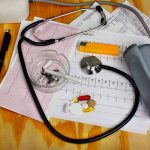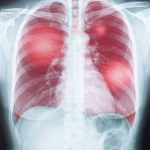The ONE organ responsible for high blood pressure.
Facts About Pulmonary Hypertension in 2022

What is Pulmonary Hypertension
Pulmonary hypertension is a pathological condition in which the blood pressure inside the pulmonary arteries and right heart chambers is elevated. Very often, this serious condition is linked to a deterioration of the wall that makes up the pulmonary arteries (or their ramifications): following this alteration, in fact, the same arteries narrow and the blood flow inside them is reduced. The main symptoms of pulmonary hypertension are dyspnea , chest pain , fainting, and tachycardia . To correctly diagnose this condition, several diagnostic tests are needed, also necessary to trace the triggering causes. The therapy can be pharmacological or, if the drugs have poor results, surgical.Brief reference on the anatomy of the heart
Before describing pulmonary hypertension, it is helpful to review some key features of the heart. The heart is divided into two halves, right and left. The right heart is composed of the right atrium and the underlying right ventricle . The left heart is composed of the left atrium and the underlying left ventricle . Each atrium is connected to the underlying ventricle by a valve . The right atrium receives deoxygenated blood through the vena cava . The right ventricle pumps blood into the pulmonary arteries , which carry it to the lungs . In the lungs, the blood is loaded with oxygen. The left atrium receives oxygenated blood returning from the lungs via the pulmonary veins . The left ventricle pumps oxygenated blood to the organs and tissues of the human body via the aorta . Each ventricle communicates with its efferent vessel by means of a valve. Therefore, there are four valves in the heart .Causes
In most cases, pulmonary hypertension occurs when the walls of the pulmonary arteries undergo an alteration, as a result of which they narrow or become completely occluded. This has two consequences: on the one hand, the resistance that the blood encounters on its way from the heart to the lungs increases, and on the other hand, the pumping action of the right ventricle is impeded. In other words, at the origin of pulmonary hypertension there is almost always a vasoconstriction of the arteries that carry blood from the heart to the lungs; this vasoconstriction reduces blood flow to the lungs and prevents the right ventricle from functioning normally. Since the causes capable of modifying the structure of the pulmonary arteries are numerous, doctors have decided to distinguish pulmonary hypertension into 5 categories:Group I - Pulmonary arterial hypertension . It is further divided into the following subcategories:
- Idiopathic pulmonary hypertension
- Hereditary pulmonary hypertension
- Pulmonary hypertension induced by drugs or toxic substances
- Persistent pulmonary hypertension of the newborn
- Pulmonary hypertension associated with other morbid conditions, including: portal hypertension , HIV infection , connective tissue disease , etc.
Group II - Pulmonary hypertension due to left heart dysfunction . The main dysfunctions involve the left ventricle and the mitral and aortic valves .
Group III - Pulmonary hypertension due to pulmonary dysfunction and hypoxia . The following morbid states or situations are responsible for this type of pulmonary hypertension:
- Chronic obstructive pulmonary disease ( COPD )
- Pulmonary interstitial disease
- Sleep apnea syndrome
- High altitude (above 2400-2500 meters)
- Alveolar hypoventilation
Group IV - Pulmonary hypertension related to chronic thromboembolism . Thromboembolism is a disease characterized by the tendency for blood clots to form attached to the wall of blood vessels ( thrombi ), which can detach and enter the bloodstream ( emboli ).
Group V - Pulmonary hypertension due to other causes . Various diseases are responsible for this form of pulmonary hypertension, including:
- Myeloproliferative disorders
- Sarcoidosis
- Neurofibromatosis
- Vasculitis
- Histiocytosis X
- Gaucher disease
- Thyroid disorders
- Chronic renal failure
- Compressing tumor masses









